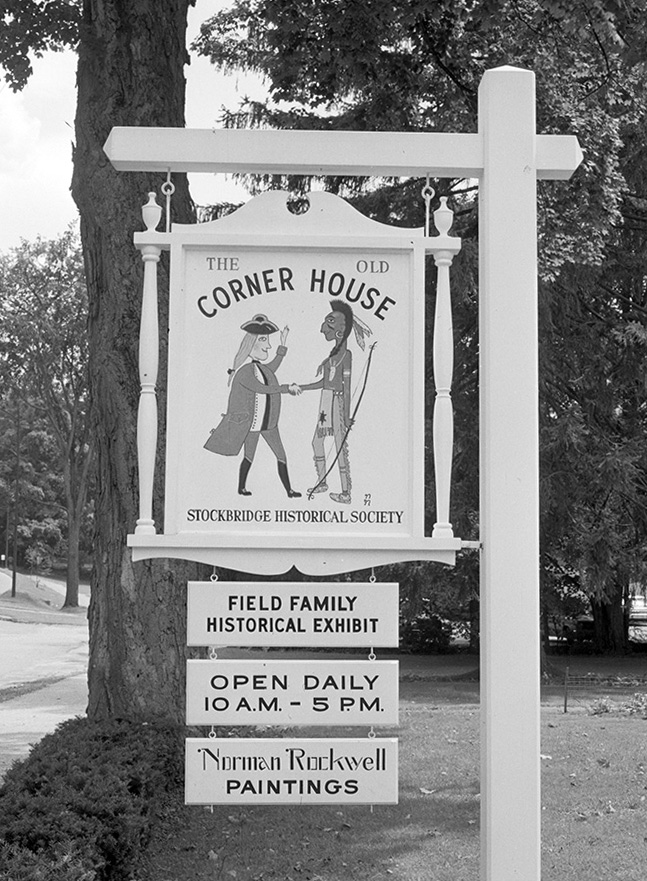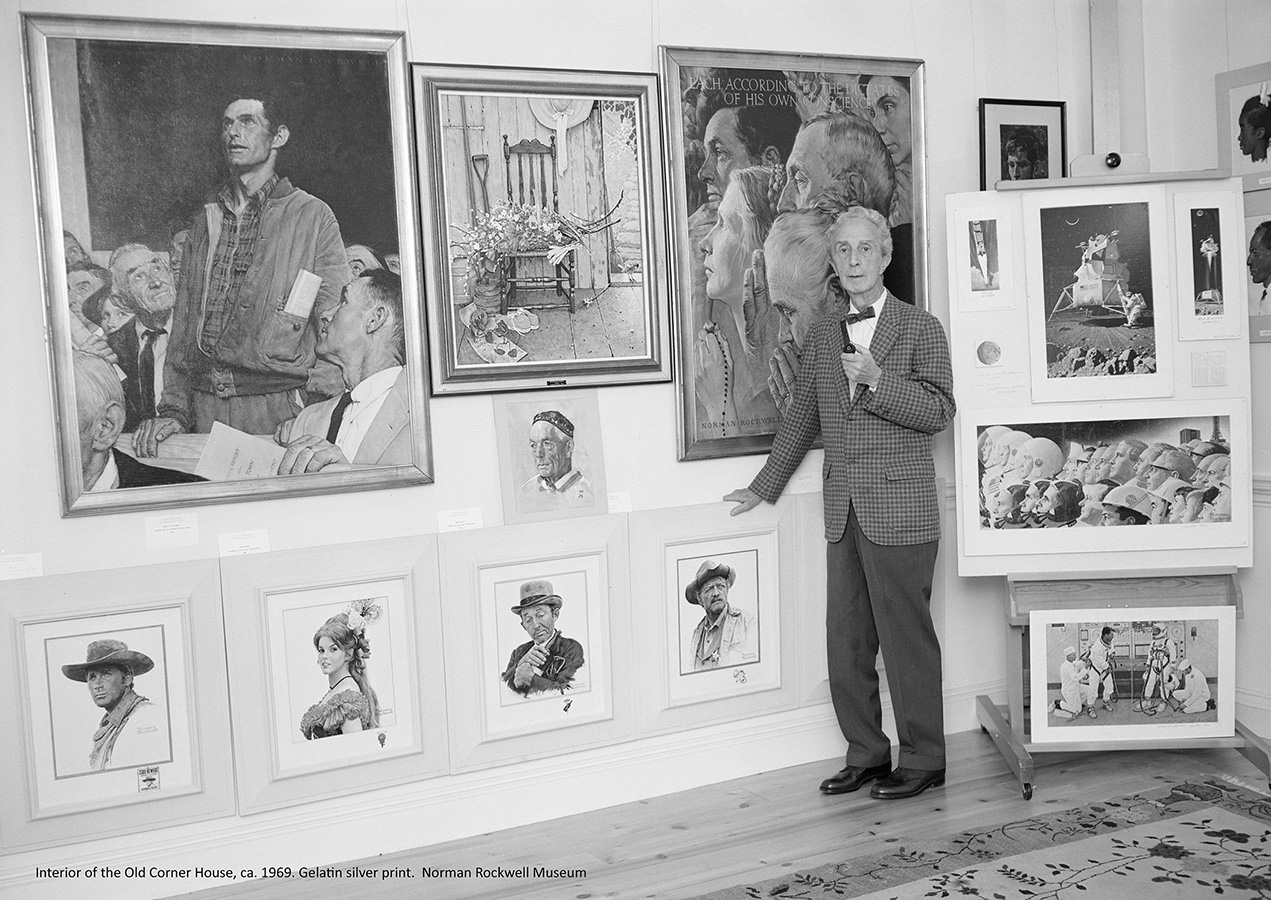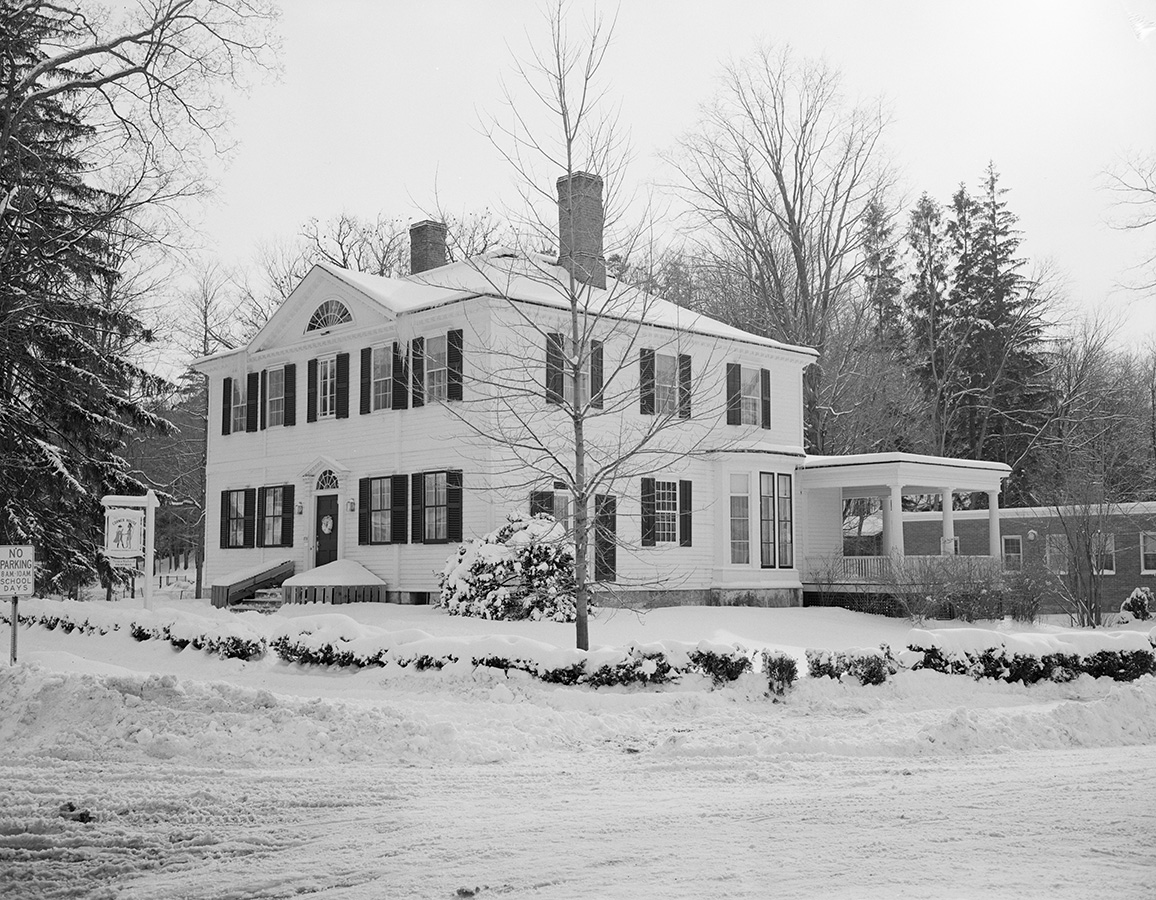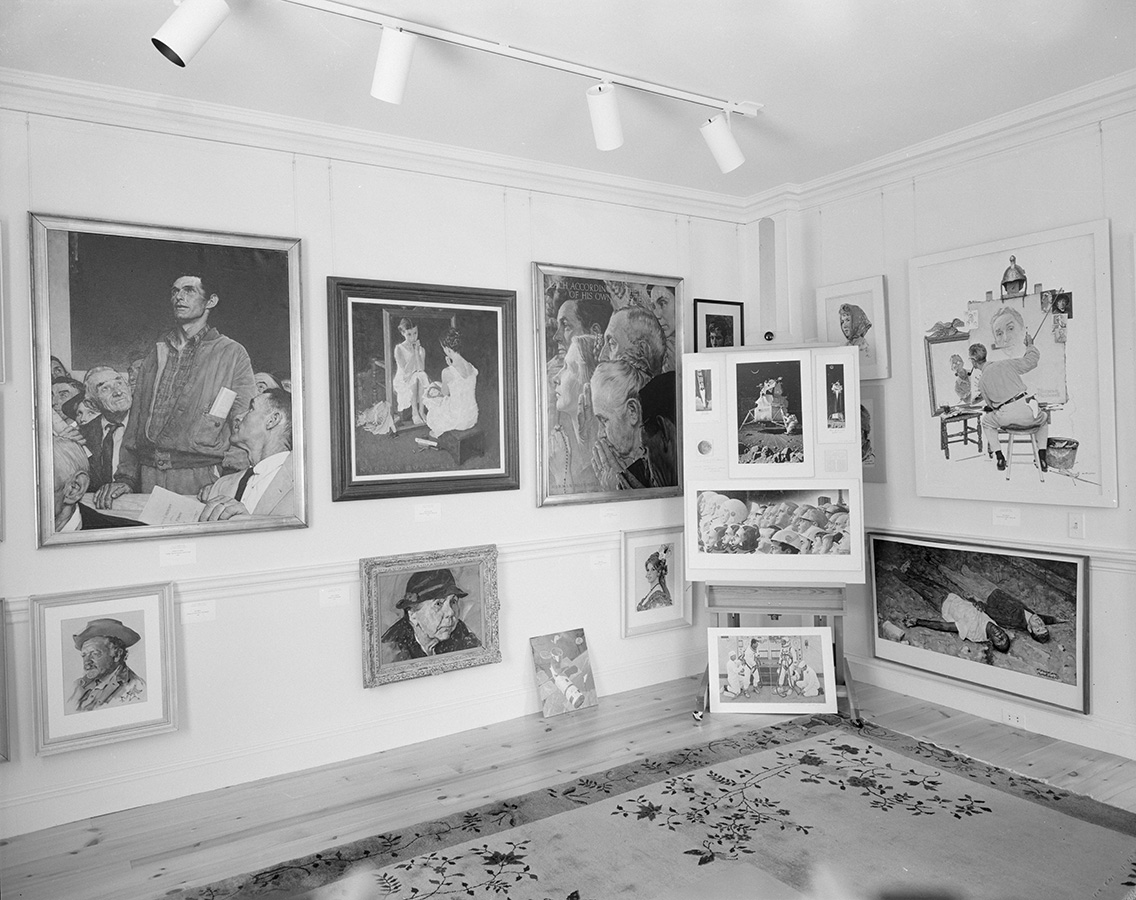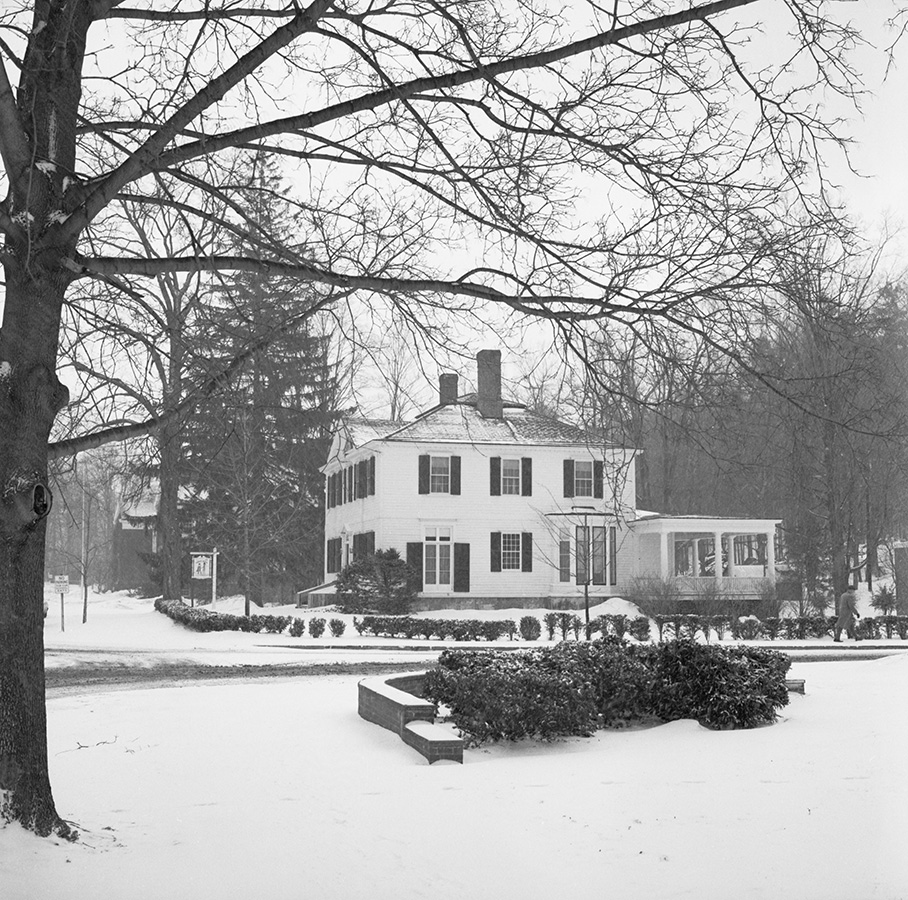FOR THE PEOPLE: MEMORIES OF THE OLD CORNER HOUSE
April 27 through October 27, 2019
From its humble beginnings in the historic Old Corner House in downtown Stockbridge in 1969, the Norman Rockwell Museum has grown into a vital center which informs the public of Norman Rockwell’s life and career while showcasing the history of American illustration through its ever-growing collection of work by Rockwell and other artists. The original sign from the Old Corner House which promised “Norman Rockwell Paintings” inside will be displayed amongst photographs of the original Museum staff and Rockwell family members, and video diaries of visitors, models, and staff present during that seminal year.
Visitors and community members are invited to share their stories and memories of the early Corner House days or just wishing the Museum a Happy 50th Anniversary by posting their story on social media using the hashtag #NRM50 and we will post select stories right here on the website.
ABOUT THE ARTIST
Born in New York City, Norman Rockwell always wanted to be an artist. At age 14, Rockwell enrolled in art classes at The New York School of Art (formerly The Chase School of Art). Two years later, in 1910, he left high school to study art at The National Academy of Design. He soon transferred to The Art Students League, where he studied with Thomas Fogarty and George Bridgman. Fogarty’s instruction in illustration prepared Rockwell for his first commercial commissions. From Bridgman, Rockwell learned the technical skills on which he relied throughout his long career.
Rockwell found success early. He painted his first commission of four Christmas cards before his sixteenth birthday. While still in his teens, he was hired as art director of Boys’ Life, the official publication of the Boy Scouts of America, and began a successful freelance career illustrating a variety of young people’s publications.


